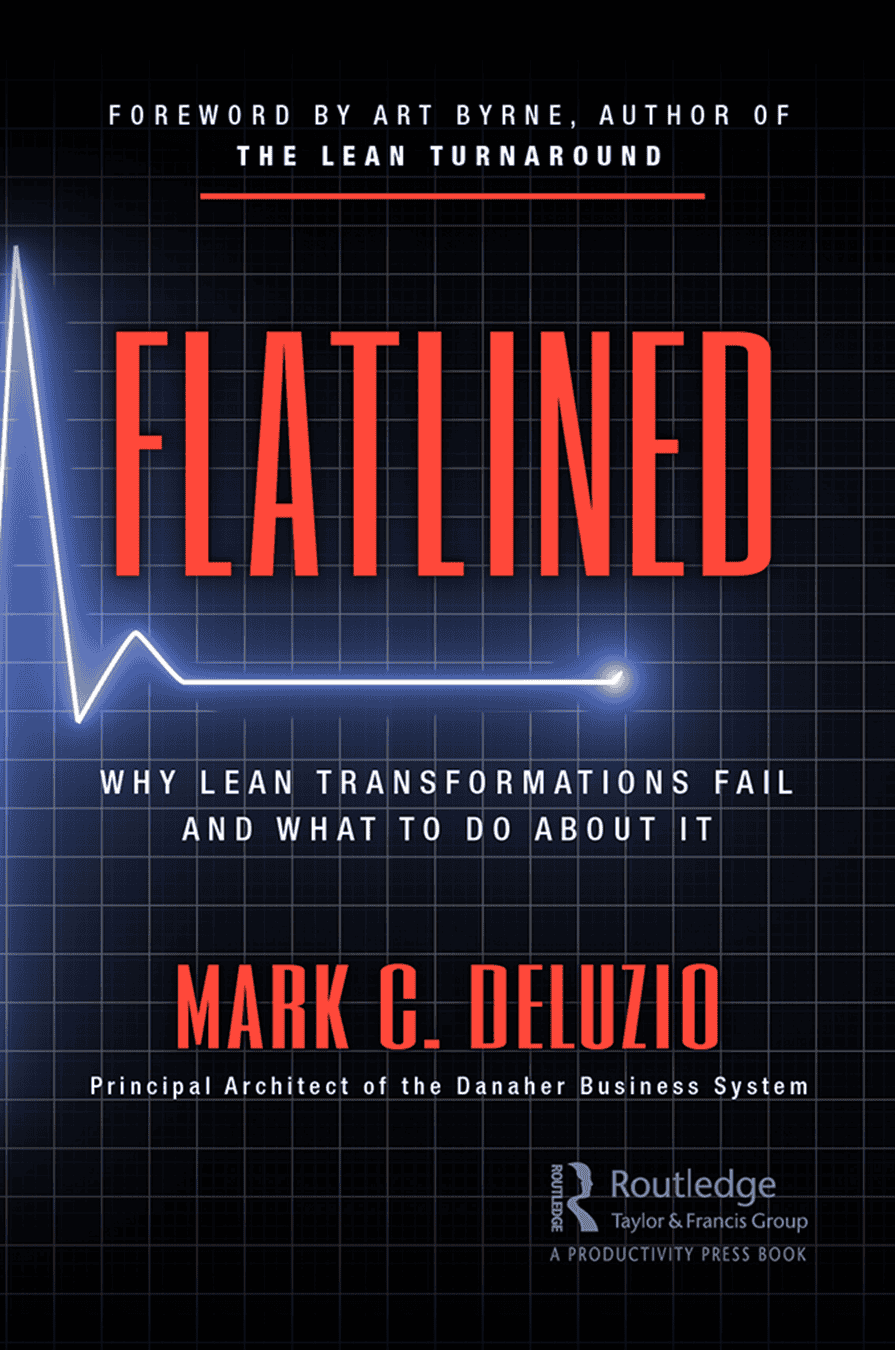Once a symbol of industrial efficiency, the assembly line is undergoing a quiet revolution: mixed-model production. Mixed-model production, an evolution of Lean manufacturing principles, redefines what’s possible on the factory floor. By seamlessly integrating variety into standardized processes, this approach is helping manufacturers meet the growing demand for customization without sacrificing productivity. Mark DeLuzio, President and CEO of Lean Horizons Consulting and principal architect of the Danaher Business System, and Kevin Mathis, Managing Director at Lean Horizons Consulting, bring decades of experience implementing these strategies. Kevin’s work at Danaher’s Hennessey division in the late 1980s and early 1990s, where he implemented the first mixed-model production line, became a cornerstone in developing the Danaher Business System.
This article explores the concept of mixed-model production, its numerous advantages, and practical strategies for implementation in various organizational settings. Keep reading to learn insights into navigating the challenges and reaping the benefits of this powerful Lean manufacturing approach.
What is Mixed-Model Production?
Mixed-model production is an approach to manufacturing multiple products that aligns production more closely with customer demand patterns. This approach contrasts with traditional batch production, where manufacturers produce large quantities of a single model before switching to the next.
Mark emphasizes that this approach aims to “match your production schedule as close as possible to the way customers are ordering your product.” By doing so, manufacturers can produce products in the mix and sequence that customers want, improving efficiency and customer satisfaction.
Benefits of Mixed-Model Production
Implementing mixed-model production can lead to several significant improvements in manufacturing operations. One of the most notable benefits is reduced inventory. Kevin notes that after implementing, “inventory of finished goods drastically reduced from weeks to days.” This reduction applies not only to finished goods but also to work-in-progress inventory throughout the production process.
Another key advantage is improved flexibility. By producing multiple models on the same line, manufacturers can respond more quickly to changes in customer demand. This flexibility also leads to better space utilization, as having less inventory on hand allows manufacturers to use factory floor space more efficiently.
In a mixed-model system, products move through the production process more quickly, reducing lead times and enhancing customer responsiveness. Producing in smaller batches allows manufacturers to identify and address issues concurrently, improving overall quality.
Surprisingly, mixed-model production can also increase employee engagement. Kevin shares, “We saw the level of employee engagement, satisfaction, and outlook take a huge leap forward.” This improvement in morale often stems from the variety and problem-solving opportunities that mixed-model production provides.
Key Concepts of Mixed-Model Production
To successfully implement mixed-model production, it’s essential to understand and apply several key concepts:
- Takt Time: The rate at which products need to be completed to meet customer demand.
- Standard Work: This involves documenting the best practices for each operation, ensuring consistent performance across different models.
- Heijunka (Level Scheduling): This concept involves creating a balanced production schedule that distributes the production of different models evenly over time.
- Kaizen: Continuous improvement activities involving employees are crucial for refining the process.
- Water Spiders: These are flexible workers who can handle variations between models or perform sub-assembly tasks to keep the main line flowing smoothly.
These key concepts form the foundation of mixed-model production, each playing an essential role in its success. Understanding these principles is essential, but the true challenge lies in their practical application. Effective implementation requires integrating these concepts into existing manufacturing processes while addressing various operational challenges.
Implementing Mixed-Model Production
While the benefits of mixed-model production are clear, implementation can be challenging. One of the main hurdles is balancing work content across different models. Kevin advises, “We start looking at that work and say, well, what causes the variation within the models? Some models have two controllers, some have one controller, maybe some have three buttons and some only have one button. What are the issues that cause the variation?” The solution often involves removing variation from the main line and handling it through sub-assembly processes or water spiders.
Quick changeovers are essential. Implementing SMED (Single-Minute Exchange of Dies) techniques can significantly reduce changeover times, allowing for more frequent model switches without losing efficiency.
This production method also requires close coordination with suppliers. “We implemented a pull system so that they could see when we used three of something in a day,” explains Kevin, “then the suppliers got a signal that said, ‘We used three, deliver three more.'” This system ensures that parts are available when needed without excessive inventory buildup.
Employee engagement and training play significant roles in successful implementation, with job rotation and cross-training being especially important. This approach not only provides variety for employees but also ensures flexibility in the production process.
“We rotated the assemblers through all those workstations. One, that gave us a lot of flexibility if someone was gone or the mix shifted, and two, they enjoyed it more. The work wasn’t as monotonous, and they got to change what they did.”
– Kevin Mathis
Organizational processes, particularly Sales and Operations Planning (S&OP), must align with mixed-model production principles. Commercial teams should work with customers to smooth demand where possible, helping to create a more predictable production schedule.
Continuous improvement is at the heart of mixed-model production. Regular kaizen events involving employees are key to refining the process. Kevin provides a simple change in perspective, “You just have to flip the question around to say, how am I going to do it? And just start solving one problem at a time.”
Overcoming Challenges
Implementing mixed-model production isn’t without its challenges. Resistance to change is common, as many employees and managers may be skeptical of moving away from batch production. To help mitigate concerns, organizations focus more on model similarities and potential benefits.
“Focus on the commonalities, more so than your differences, because you’ll talk yourself out of it.”
– Mark DeLuzio
Another significant challenge is ensuring the entire supply chain aligns with this approach. Achieving this alignment often requires working closely with suppliers to implement pull systems and improve communication. Kevin notes, “We started working our way back and then found, ‘Well, here’s a problem.’ So how do we solve the problem, right? We implemented a better forecasting model with our suppliers so they could see what was coming.”
A crucial element in overcoming these challenges is maintaining a problem-solving mindset. Rather than viewing obstacles as insurmountable, successful organizations approach them as opportunities for improvement. This mindset, combined with employee engagement and a commitment to continuous improvement, can help organizations successfully implement and benefit from mixed-model production.
Realize Your Manufacturing Potential
Mixed-model production offers a powerful approach to streamlining operations, enhancing customer responsiveness, and boosting employee engagement. While the benefits are substantial, successful implementation requires understanding key concepts, careful planning, and a commitment to continuous improvement. By aligning production with customer demand and fostering a culture of flexibility, organizations can achieve new levels of efficiency. However, the journey can be complex, often requiring expert guidance.
Lean Horizons Consulting is ready to help you navigate this journey. With our deep industry knowledge and practical strategies, we can assist your organization in effectively implementing mixed-model production. To hear more from Kevin, feel free to connect through LinkedIn.
Contact our team today to discover how we can partner with you to transform your manufacturing operations and achieve lasting success.

